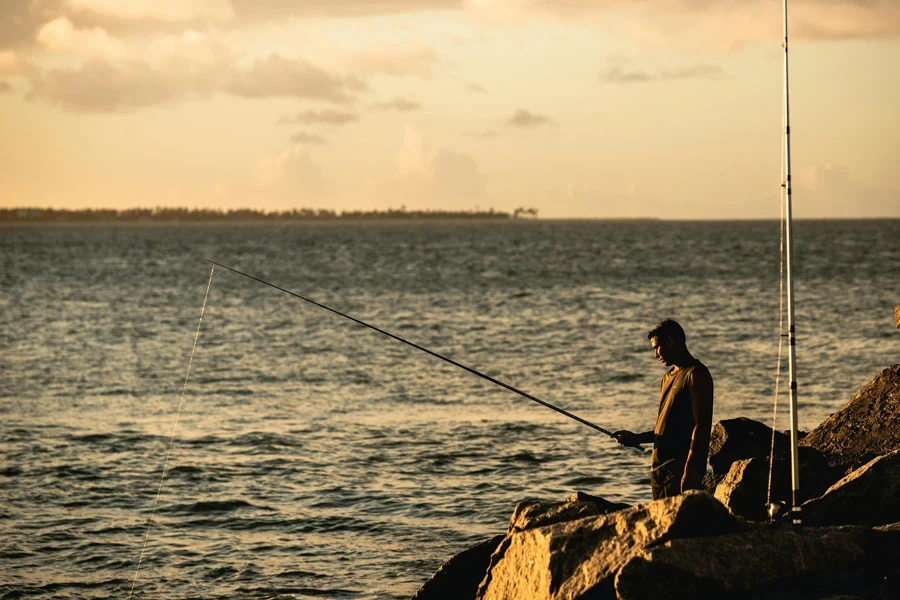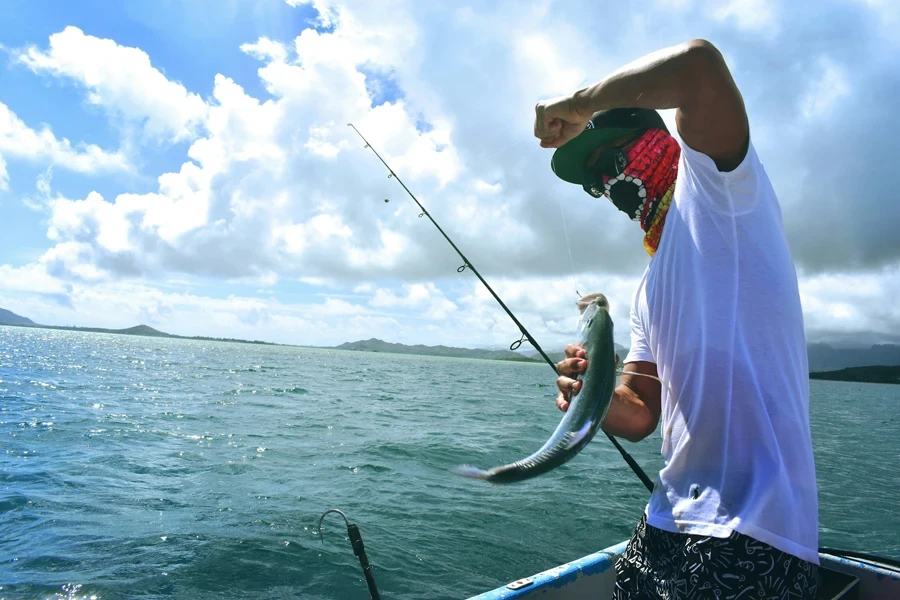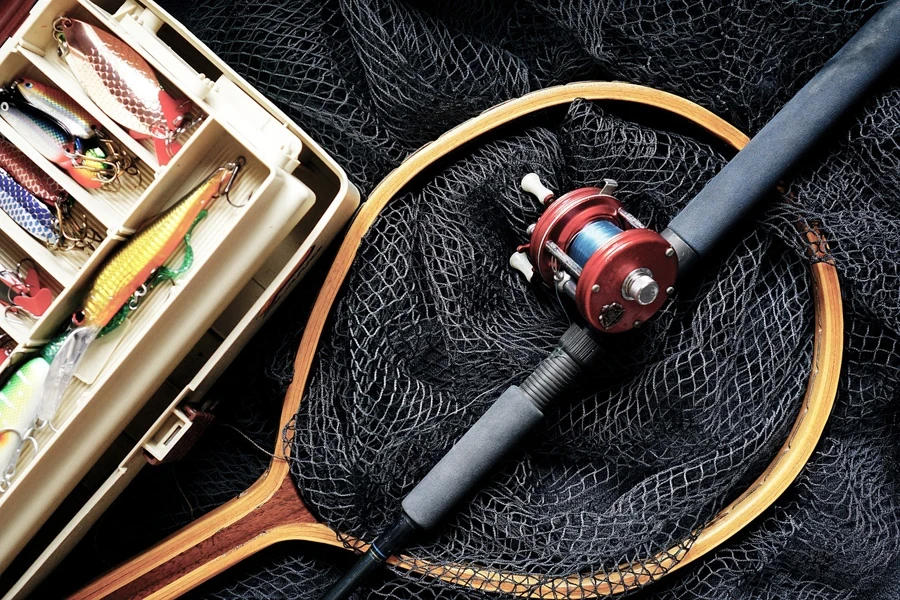Table of Contents
● Introduction
● Market Overview
● Different Types of Nylon Fishing Lines and Their Features
● Key Considerations When Selecting a Nylon Fishing Line
● Conclusion
Introduction
Fishing enthusiasts now rely heavily on nylon fishing lines for their fishing needs. These lines are flexible and strong while also being a cost-effective option. They are perfect for professional fishing and recreation. They can also be used in aquatic settings such as lakes and deep-sea due to their strength and flexibility. Their market continues to grow due to advancements in fishing line technology and the rise in recreational fishing pursuits. The rising need highlights the significance of selecting the right nylon fishing line to improve fishing outcomes.
Market overview

The worldwide market for nylon fishing lines reached $600 million in 2023. It is projected to reach approximately $630 million by the conclusion of 2024, with a yearly growth rate of 4.5% from 2024 to 2029. As stated by Fortune Business Insights, the rise in demand is attributed to advancements in material technology that have enhanced the strength and effectiveness of nylon lines, thus catching the interest of both professional and recreational anglers. The growing fascination with fishing activities in North America and Europe plays a role in the surge of requests for top-notch nylon fishing lines
Europe is currently at the forefront of the market, with a stake of around 35%. It is anticipated to remain strong until 2024 due to its strong fishing sector and consumers’ increasing desire for top-quality fishing equipment. Upon Europe’s lead stands North America, with the U.S. holding a 28% market share predominantly fueled by a big fishing community. The Asia Pacific region is showing growth potential in countries like China, Japan, and Southeast Asia, and there are expectations for expansion in these markets. By 2029, this region is anticipated to secure a market presence due to the increased use of advanced fishing methods and approaches, as reported by MarkWide Research.

Different types of nylon fishing lines and their features
Different types of nylon fishing lines are available to cater to fishing requirements and situations for anglers looking to enhance their fishing outings. This segment will delve into the main attributes of monofilament, braided, and fluoro-coated nylon lines. It will also underscore their advantages and where they are best used. Be it deep sea waters, crystal clear streams, or just looking for a reliable nylon fishing line that can handle different situations effectively. Your choice can make a big difference in your fishing trip’s success.
Monofilament nylon lines
Fishermen commonly prefer monofilament nylon lines for their cost-effectiveness and the flexible nature of nylon. The construction of these lines involves a strand of nylon that gives them a circular shape for effortless casting and manipulation. In line with information from Thispowerrope.com, the stretchiness of these lines offers quality, making them well-suited for novices as they lower the risk of line breakage during unexpected pressure points. The stretchiness of the lines is also beneficial for cushioning the impact of fish movements when pursuing species famous for their vigorous and erratic dashes. The affordability of these lines also adds to their appeal in fishing settings ranging from freshwater to mild saltwater locations.
Braided nylon lines
Braided nylon fishing lines are highly regarded for their durability and resistance to abrasions due to their profile and robust construction. It is a popular choice for deep-sea and heavy-duty fishing activities. Unlike single-stranded nylon threads, braided lines comprise multiple intertwined strands of nylon that create a significantly stronger line with minimal stretch characteristics. The enhanced strength of braided lines enables anglers to use lines without compromising durability. This is advantageous in situations where line visibility and drag are important considerations. As Nettingland.com states, braided lines allow fishermen to spool lines onto a reel easily. It is a crucial factor in deep-sea fishing, where extended lengths of line are frequently needed for success. Moreover, the durability of braided lines makes them perfect for fishing in locations with vegetation, rocks, or other obstructions that would damage sturdy lines.

Fluorocarbon-coated nylon lines
Fluorocarbon-coated nylon fishing lines bring together the best of both worlds. The flexibility of nylon and the invisible nature of fluorocarbon underwater. These are a winning combination for anglers looking to up their game in waters where fish are easily startled by visible lines. As Bubba.com explains, the fluorocarbon coating makes the line less visible. It boosts its sensitivity level significantly, enabling fishermen to feel even the gentlest bites with precision. The extra strength from the fluorocarbon layer helps keep the line secure when under pressure, making it a dependable option for catching fish that need an approach. Also, these lines sink quicker than nylon lines, which can be beneficial when fishing at depths to ensure the bait gets to the right spot faster.
These nylon fishing lines have benefits that suit fishing settings and styles of angling practices, making them a must-have for every angler gear collection.
Key considerations when selecting a nylon fishing line
Choosing the nylon fishing line is essential for getting the results when you’re out on the water fishing. A few things to keep in mind are the quality of the line’s material and strength and durability. Also, focusing on the environment where you’ll be fishing is important in picking the line for your needs. Considering all these factors before choosing a fishing line ensures that you’re making an investment that will serve you well in your fishing adventures.
Material composition and quality
When selecting a nylon fishing line, quality is key. That’s because high-quality nylon ensures the line is strong and flexible for all fishing scenarios. Nylon has gained popularity for its toughness and ability to withstand conditions. Its water absorption capacity plays a role in determining how fast the line sinks, which is a factor in various fishing methods, like purse seine nets. Choosing high-quality nylon improves performance by decreasing the chances of breakage and ensuring the fishing line can endure freshwater and saltwater conditions.
Strength and durability
Assessing the durability and toughness of a nylon fishing line is crucial when going after large fish or fishing in challenging conditions. As Bubba pointed out, the line’s strength keeps it from breaking under loads, and its resistance to abrasions shields it from damage on surfaces like rocks or debris. Nylon’s ability to stretch strikes a balance between strength and flexibility, allowing it to absorb shock from fish movements. They are perfect for fishing species known for their powerful runs.

Fishing environment and application
Choosing the ideal kind of nylon fishing line depending on the fishing setting is essential for optimizing effectiveness.ThisPowerRope suggests that distinct lines are needed for freshwater conditions compared to saltwater or ice fishing scenarios. For example, braided nylon lines are commonly favored for deep-sea angling due to their build and robustness. Conversely, single-strand nylon lines are well suited for freshwater fishing thanks to their adaptability and user-friendliness. Knowing the challenges of your fishing surroundings, like navigating currents or murky waters and handling varying temperatures helps you select the right nylon fishing line for the job.
Cost and value
Quality nylon fishing lines may cost more, but their durability and performance make them a worthwhile investment in the long run. Cheaper alternatives often fall short on consistency and longevity. As noted by Bubba, investing in a well-made nylon line with features like fluorocarbon coatings or improved UV resistance guarantees enhanced durability and reliability. This implies fewer replacements and an improved fishing experience, which would justify the initial higher cost as a smart long-term investment for dedicated anglers.
Conclusion

Selecting the right nylon fishing line is crucial for anglers looking to enhance their fishing adventures. Various nylon lines like monofilament, braided, and fluorocoated provide various advantages tailored to fishing locations and target fish. By considering elements like material grade, tensile strength, and adaptability to fishing scenarios, fishermen can opt for a line that addresses their particular requirements and guarantees longevity and dependability while on the water.
Invest in a top-notch nylon fishing line to boost your fishing results and get lasting value with performance and fewer line changes over time. By choosing the right line for the job, you can handle conditions more effectively and enjoy greater flexibility across various fishing scenarios. Ultimately, it’s all about grasping these aspects that contribute to fun-filled fishing excursions, making that perfect nylon fishing line an investment well worth it.




